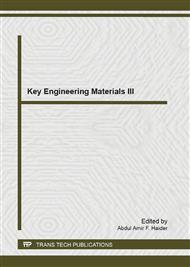p.47
p.53
p.59
p.64
p.71
p.77
p.82
p.87
p.93
Evaluation on Diffusion of Bipolar Junction Transistor (BJT) Charge-Carrier and its Dependency on Total Dose Irradiation
Abstract:
Electronic device that subjected to various effects by radiations can cause small interferences such as noises in the circuit. These effects are especially critical in operating environment such as outer space, where radiation comes in stronger and more frequent. In this research, analytical study on the effects of ionizing radiation induced by 60Co gamma (γ) rays in bipolar junction transistor (BJT) devices had been performed. It was found that the high energy of the radiation allows more valence electrons to be excited to the conduction band in the BJT. This leads to the production of a large number of excited atoms and increases the holes in the valence band. The increase of holes in the base region due to trapping will increase the probability of recombination and reducing the number of electrons that reaches the collector region. This ionizing radiation effect was found to arouse either a permanent or temporarily damage in the devices depending on their current drives and total dose absorbed.
Info:
Periodical:
Pages:
71-76
Citation:
Online since:
May 2013
Authors:
Price:
Сopyright:
© 2013 Trans Tech Publications Ltd. All Rights Reserved
Share:
Citation:


